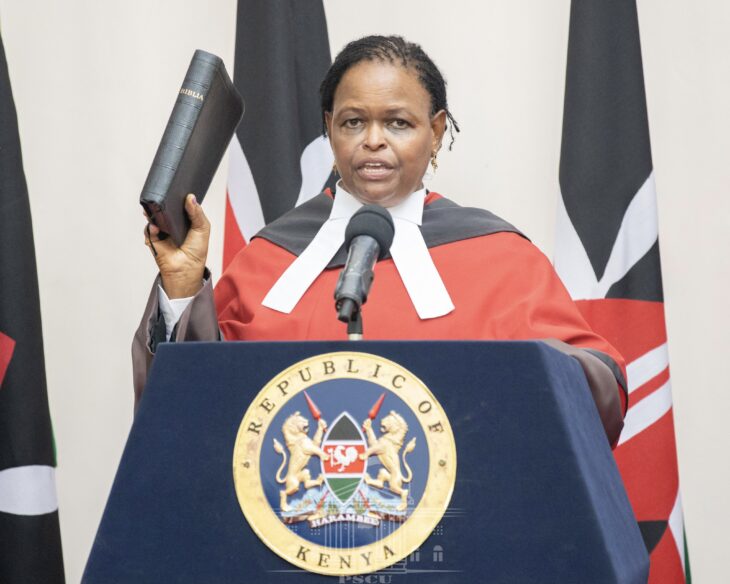On Monday, September 5, the Supreme Court dismissed Azimio la Umoja One Kenya Coalition party captain Raila Odinga‘s presidential petition challenging William Ruto’s win.
The former Prime Minister had claimed that William Ruto did not achieve the 50 percent plus one vote threshold required by the Constitution to be declared the president.
But the Court found that the declared President-elect attained 50%+1 of all the valid votes cast in accordance with Article 138(4) of the Constitution.

On Monday, September 26, the apex court in its detailed judgment gave five reasons why it declared Raila’s presidential petition as ‘hot air.’
- Lack of credible evidence
Raila had presented the registrar of the Supreme Court with a lorry full of evidence to overturn the election of William Ruto.
However, the Court held that the petitioners failed to establish to the required standard that there was interference with the uploading and transmission of Forms 34A from the polling stations to IEBC’s public portal
2. IEBC servers were not hacked
In his 72-page petition, the Azimio la Umoja One Kenya Coalition party leader had argued that at least five foreigners of Venezuelan origin infiltrated the IEBC servers three weeks before the voting days and one week after elections day.
But in its detailed judgment, the Supreme Court held that the petitioners failed to establish to the required standard that there was interference with the uploading and transmission of Forms 34A from the polling stations to IEBC’s public portal.
“The review of some of the logs presented by petitioners as evidence to support the claim of interference showed that they were either from the same logs used in the 2017 Presidential Election or were outright forgeries,” the Court said.
3. Results on Forms 34As rhymed with those on the IEBC portal
Raila in their petition had stated that there were discrepancies in results in Forms 34A and the one uploaded on the IEBC portal.
However, the Court established that there was no difference between Forms 34A uploaded on IEBC’s Public Portal, those received at the National Tallying Centre, and those issued to the candidates’ agents at the polling stations.
The Registrar’s Report revealed that the original Forms 34A from the contested polling stations, which were alleged to have been intercepted and interfered with, were exactly the same as those on IEBC’s Public Portal and the certified copies presented to the Supreme Court by IEBC under Section 12 of the Supreme Court Act
4. Postponement of the gubernatorial election in Kakamega and Mombasa did not surprise the presidential voting pattern
There was no proof to the Court’s satisfaction that the postponement of Gubernatorial elections in Kakamega and Mombasa Counties, as well as Parliamentary elections in certain electoral areas, resulted in voter suppression to the detriment of the 1st petitioner.
In any event, IEBC had the requisite constitutional and legal authority to postpone elections in the Counties, Constituencies, and Wards in question.
5. Divisions of IEBC commissioners had no effect on the final presidential results
In the consolidated petition, petitioners had argued that there was a division among the IEBC commissioners which saw four of them disown the results that were announced by IEBC chairman Wafula Chebukati.
But in its 133-page ruling, the Supreme Court said despite the apparent divisions between the Chairperson and the four Commissioners of IEBC, the Court was persuaded that IEBC carried out the verification, tallying, and declaration of results in accordance with Article 138 (3) (c) and (10) of the Constitution.
